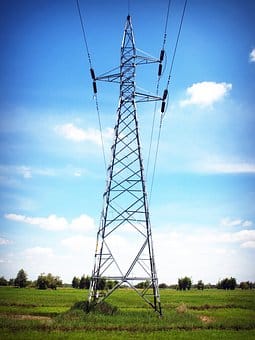Florida Commission Approves Utility Storm-Hardening Plans With Changes

The Florida Public Service Commission on Oct. 4 approved storm protection plans for Florida Power & Light Company, Duke Energy Florida, Tampa Electric Company, and Florida Public Utilities Company, making some program adjustments to alleviate customer rate impacts. In its decision, the commission eliminated some planned programs because they happened to be routine utility functions rather than storm protection functions.
Accordingly, the utilities will file amended plans by Oct. 25. Thereafter the commission is scheduled to hold a hearing from Oct. 25 to Oct. 28 to define the costs that will be imposed on consumers next year for the projects.
The approval comes even as the state battles Hurricane Ian, which made landfall on Florida’s western coast on Sept. 28 as a Category 4 hurricane. Hurricane Ian has affected the Southwest Florida coast and led to significant disruptions, including power interruptions across the state. As a response, state regulators have approved utilities’ long term plans to try and strengthen the electricity grid.
The plans filed by the utilities include proposals such as increasing the number of underground power lines and installing stronger, more resistant poles and enhanced technology. Moreover, trimming trees could help maximize power reliability, since falling limbs or downed trees are a leading cause of power outages. The plans are projected to cost billions of dollars over the next decade and passing the costs onto consumers directly could become problematic, with monthly electric bills of consumers already increasing because of record high natural gas prices used to generate electricity.
The plans approved by the commission are linked to a 2019 state law that was enacted after Hurricane Irma and additional storms initiated pervasive electricity disruptions and outages. The law directed utilities to file 10-year plans to reduce restoration costs and outage times associated with extreme weather events and enhance reliability. In the past, utilities included such expenditures in their base electric rates, which are determined for a number of years.
As it stands utilities file storm-protection proposals with the commission and then are able to recover costs from customers annually to execute the plans. The new rules established a separate cost recovery mechanism for storm protection activities besides the existing storm hardening programs financed through a utility’s rate base. Utilities may seek the agency’s approval to recover incremental costs annually in a separate recovery clause.
EnerKnol Pulses like this one are powered by the EnerKnol Platform—the first comprehensive database for real-time energy policy tracking. Sign up for a free trial below for access to key regulatory data and deep industry insights across the energy spectrum.
ACCESS FREE TRIAL